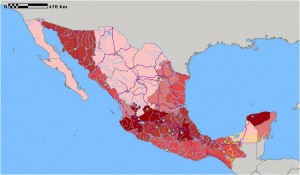Simplicity rules, not only in the minds of many researchers and farmers, but also, and to an even greater extent, in the press. Shades of grey, subtleties of interpretation, multiple responses to complex questions; this is not the stuff of daily journalism. But why not? Is there any evidence that readers really can’t cope with this kind of complexity? Or maybe it is the journalists who can’t cope.
There’s no other way to explain the appearance, yet again, of a story saying that genetically engineered bananas are the best way to contain banana Xanthomonas wilt (BXW) in East Africa. According to the article, “genetic modification offers a low-cost and timely solution to the farmers who are reluctant to use labor-intensive control measures”. Those labour-intensive methods?
A task force set up by the Ugandan government in 2001 in response to the outbreak of the disease reduced the disease incidence to less than 10% in areas where farmers adopted these measures. However, the implementation is not sustainable due to the high costs.
But I can’t see any reference to studies of those costs, which could be reduced even further if new methods for dealing with infected plants become widespread. It seems to me that the projected losses in Uganda ascribed to BXW — between USD 2 and 8 billion over the past 10 years, and projected future losses of up to 53% “if the disease is left unchecked” — are intended to push the country towards genetic engineering as the only effective response. There is a place for GMO bananas, as part of an overall approach that uses a diversity of methods and a diversity of varieties to tackle not just BXW but all the other constraints on production of bananas and plantains in East Africa.
“GM bananas can wait,” a letter to editor of SciDev.net by our friends at the International Network for the Improvement of Banana and Plantain as was, is as relevant now as it was 2 1/2 years ago. One extract:
Biotechnology is one tool among many. Banana farmers should not be scared into accepting GM bananas as the only solution to a problem for which other measures are proving effective, and which Uganda’s National Agricultural Research Organisation is also actively promoting, in addition to its work on GM bananas.
Now, how hard is that to explain?

